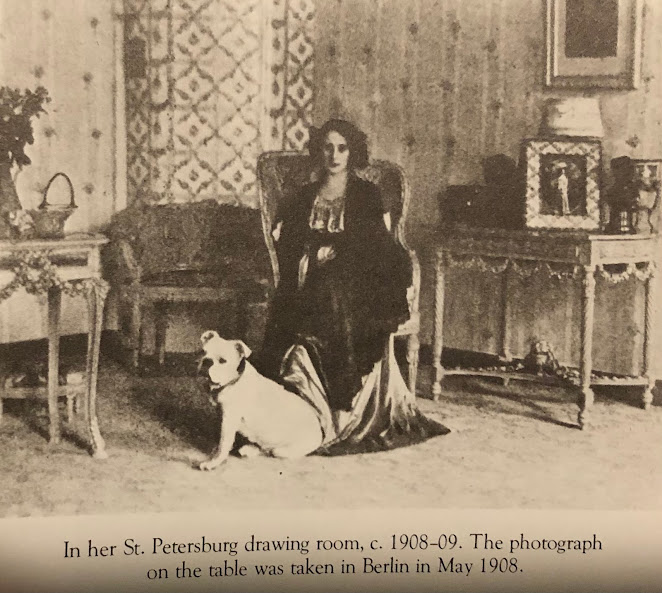Pavlova Did She Like the Tutu
 |
| Photo Credit: Anna Pavlova as the Dying Swan Photo shoot in Berlin by Photographer Hanse Herrmann, 1908 |
I think it would surprise most that Anna Pavlova had an interesting, almost love-hate relationship with the tutu. She recognized their beauty and tradition, but she also found them constraining for modern dances.In an interview in Berlin in the year 1914 Anna Pavlova said this about the tutu.
"The tutu?" I like it and I don't. Certainly, the short skirt is the ideal one for a dancer. In the tutu one can best show off the technique and art of the dance. The legs are free; every movement can clearly be seen. Every muscle's movement must be correct. All the movements are exact, precise-- is is impossible to give way to any sudden caprice. The pattern once established must remain as it is." - Quote from Anna Pavlova 1914
In this interview, Anna Pavlova explains the birth of the tutu, which was born out of necessity. The ballet dancer Camargo from the Classical School of ballet modified her costume by altering her long ballet dress. She cut the skirt very short, so her legs could be seen by other dancers, the audience, and herself. By doing this, the dance technique was seen by the audience to its total value. This altering of the ballet dress was the birth of the tutu.
Anna Pavlova talks about how she was the first Russian dancer who broke out of the tutu, which, as she put it, was very daring at the time, and how she saw the tutu hindered her from doing other styles of dances.
"I was incidentally, one of the first in the Russian ballet to become emancipated from the tutu. It was greatly daring of me, as until that time custom did not permit any performance of a dance to take place in anything other than the short skirt. However, in the stiff and conventional tutus I could not give the new dances the softness and the whimsical flexibility required. The Greek style, for instance, which is the predominant in a lot of modern dancing, can only be expressed in a flowing tunic. In general the dress should suit the character of the dance. With the costume- often with the accessory-- the dance is stamped with it's individuality. A Spanish shawl thrown over the shoulders and with which the dancer will make the play builds up the whole character of the dance. And so the costume becomes the a vital factor in the modern dance. In the more modern styles the dancer is freer than in the traditional skirt. She can indulge in the fancy of the moment, in a greater amount of caprice in her art, she is independent of the School."- Quote from Anna Pavlova 1914
She speaks about the costume designers create beautiful works of art with their costumes but lose sight of their purpose to the dancer, and they forget the costume's practical use for the dancer killing the dance.
"It is the same in all fields of creativity; one must know the purpose and dominate the material. " Anna Pavlova 1914
Anna Pavlova goes on to say there is a purpose for the short skirt for their ethereal lightness. She compares the tutu in the classical ballets to a butterfly's wing. She talks about how she enjoys wearing the tutu in the ballets "The Swan, The Butterfly, The Magic Flute.
"The tutu is like a butterfly's wing- it flaps and flutters around the body and swings harmoniously with every movement. Such ballets, which I particularly enjoy dancing are, for instance, The Swan, The Butterfly, The Magic Flute. For these dances of pure illusion, the short skirt is ideally adapted.". - Anna Pavlova 1914
Anna Pavlova talks about how the modern dances demand individuality for each individual movement and she finds wearing the tutu while performing these type of dances distorts the viewers eye because all they see is the classical dance styles. She mentions dancing on pointe and says Egyptian dances and Indian dances done on pointe in a tutu would not feel like she was acting out the characters from the story because it was not done in the style of costume or dance so the connection to the story is lost.
"The style of of the costume must suit the style of dance, and the dance as pure rhythmic motion-- as the Classical dances--requires the noncommittal skirt of the tulle. Do I prefer the short skirt above all others? I do not know. Today there are so many kinds of dance-- Egyptian, Indian, peasant dances- whose full charm is expressed by the costume. Every costume for its time, including the short skirt."- Quote from Anna Pavlova 1914
Anna Pavlova talks about how modern dances demand individuality for each movement. She finds wearing the tutu while performing these dances distorts the viewers' eye because they are classical dance styles because of the tutu. She mentions dancing on pointe and talks about if the Egyptian dances and Indian dances were done on pointe and the dancers were wearing a tutu. It would not feel the same because it was not done in the style of the costume or dance for the dancer's story to seem believable to the audience.
 |
| Photo Credit Anna Pavlova as Ta-Hor from the Cleopatra Ballet, 1909 from Pavlova Repertoire of a Legend by John and Roberta Lazzarini |



Comments
Post a Comment